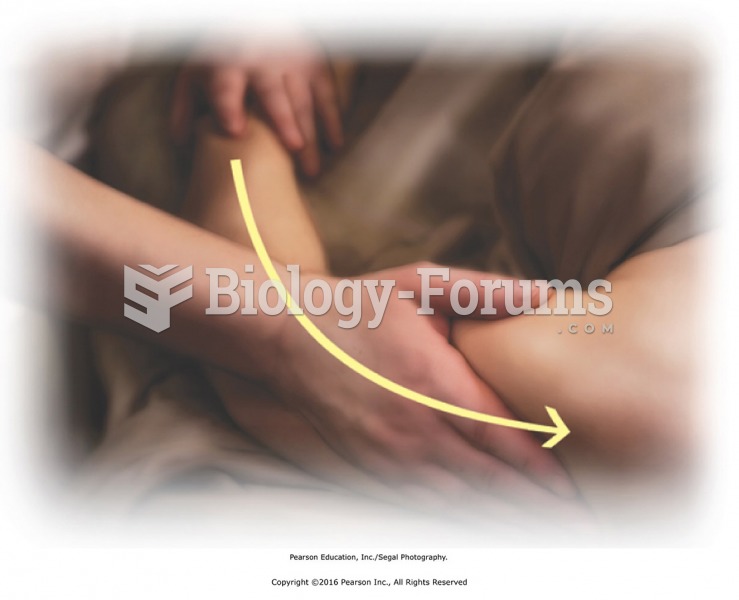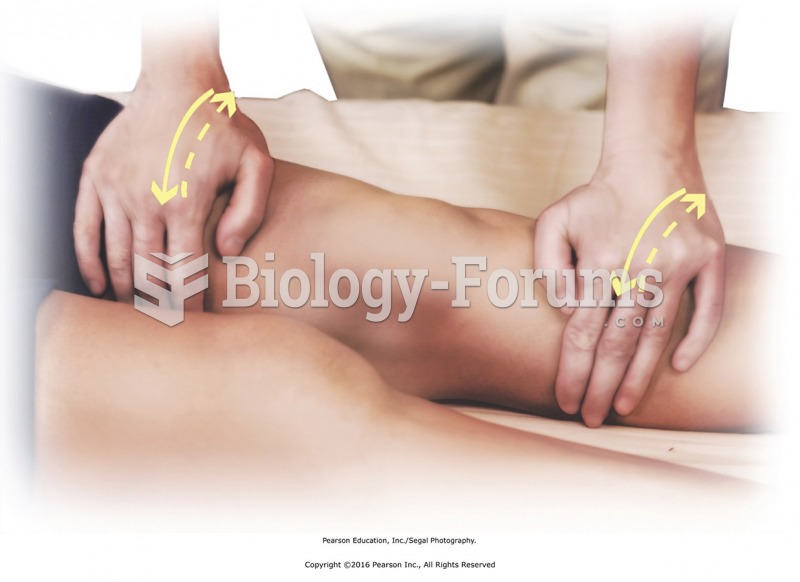This topic contains a solution. Click here to go to the answer
|
|
|
Did you know?
In 2010, opiate painkllers, such as morphine, OxyContin®, and Vicodin®, were tied to almost 60% of drug overdose deaths.
Did you know?
About 600,000 particles of skin are shed every hour by each human. If you live to age 70 years, you have shed 105 pounds of dead skin.
Did you know?
The lipid bilayer is made of phospholipids. They are arranged in a double layer because one of their ends is attracted to water while the other is repelled by water.
Did you know?
Individuals are never “cured” of addictions. Instead, they learn how to manage their disease to lead healthy, balanced lives.
Did you know?
As of mid-2016, 18.2 million people were receiving advanced retroviral therapy (ART) worldwide. This represents between 43–50% of the 34–39.8 million people living with HIV.
 With the arm placed on the table, apply effleurage over the entire upper limb as a reconnecting and ...
With the arm placed on the table, apply effleurage over the entire upper limb as a reconnecting and ...
 Establish contact by rocking the leg inward and outward in rotation. Hands move along the entire ...
Establish contact by rocking the leg inward and outward in rotation. Hands move along the entire ...




